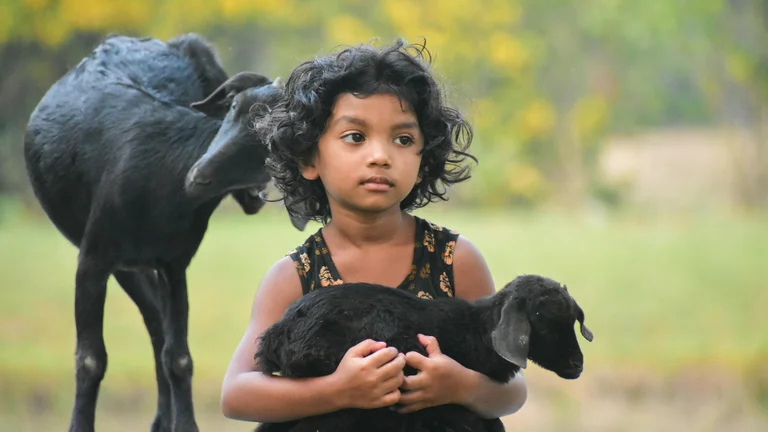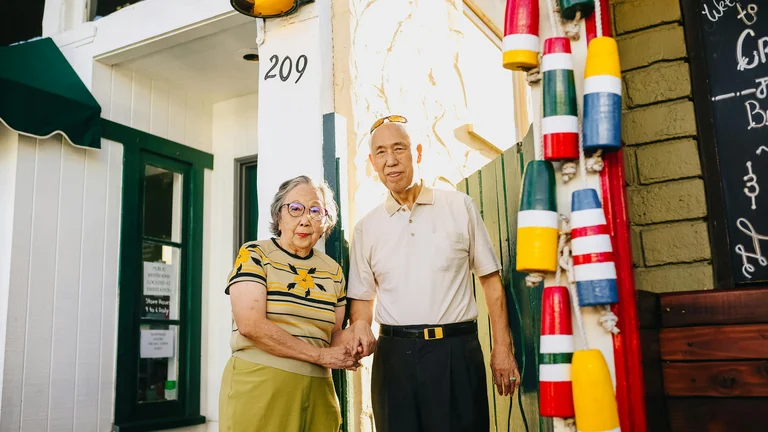
Late-night snack scenes in K-Dramas have emerged as one of the most endearing and relatable tropes that captivate audiences worldwide. These moments often blend intimacy, vulnerability, and cultural nuances, creating a unique atmosphere where characters express affection, share secrets, or simply find solace in comfort food during the quiet hours of the night. The appeal of such scenes lies not only in the delicious food featured but also in how these interactions reflect deeper emotional bonds and cultural habits inherent to Korean society. Exploring these scenes reveals much about relationship dynamics, social customs, and the role of food as a narrative device in storytelling.
The essence of late-night snacking in K-Dramas often centers around modest yet visually appealing dishes such as tteokbokki, ramyeon, hotteok, or anju served alongside alcoholic beverages. These snacks symbolize more than mere sustenance; they are conduits for character development, connection, and moments of calm amidst conflict or chaos in the plot. The nocturnal setting enhances the sense of privacy and tenderness, allowing characters to reveal hidden layers of their personalities or the warmth of their companionship, which daytime scenes might not convey as effectively.
One cannot overlook the cultural significance embedded within these late-night snack scenes. Korea’s night-time street food culture is vibrant, showcasing an array of culinary delights that perfectly accompany the quiet hours. K-Dramas encapsulate this ambiance, bringing it to life with cinematic excellence that stimulates viewers’ senses. The glow of street lamps, the steam rising from hot dishes, and the subtle clinks of chopsticks and spoons all contribute to an immersive experience. This not only appeals emotionally but also invites international viewers into Korea’s rich food heritage.
In addition to the cultural and emotional undertones, these scenes often highlight social rituals around eating and companionship. Late nights, when daily distractions lower, become times for sincere interaction. Characters sharing a plate of fried chicken or a cup of soju often engage in meaningful conversations or silent bonding, reinforcing themes of trust, healing, and reconciliation. The physical act of sharing snacks fosters a closeness that transcends words, making these moments especially poignant and memorable.
To fully appreciate the sweetness inherent in these late-night snack scenes, it’s essential to understand the culinary elements featured. Korean snacks such as tteokbokki, with its spicy rice cakes covered in vibrant red sauce, provide heat and comfort simultaneously. Ramyeon, the Korean-style instant noodle soup, conjures feelings of warmth and simplicity, often depicting characters in states of vulnerability or contemplation. Hotteok, a sweet filled pancake, adds contrast with its sugary richness, imbuing scenes with a cozy, nostalgic touch. Each of these dishes carries symbolism related to comfort, familiarity, or indulgence, reinforcing emotional connections between characters.
Iconic Late-Night Snack Scenes and Their Narrative Impact
Across prolific K-Dramas, certain late-night snack scenes have become iconic for how they blend culinary appeal and storytelling. For instance, in "Guardian: The Lonely and Great God (Goblin)," the protagonist Kim Shin prepares ramyeon late at night, reflecting his loneliness and search for meaning. The delicate presentation of the simple dish juxtaposed with his immortal burden deepens fans’ appreciation for the character. Another memorable scene from "Reply 1988" features the main characters sharing an assortment of street foods, emphasizing themes of friendship and belonging in youth.
Similarly, "Crash Landing on You" includes moments where the main characters share meals during nighttime meetings, underlining the developing affection between them. These shared meals become silent declarations of care, transcending political boundaries and personal fears. The warmth of the food echoes the gradual warmth in their hearts, creating scenes that resonate deeply with viewers. The intimate lighting and close-ups in these sequences highlight expressions and gestures normally overlooked, elevating the narrative beyond dialogue.
“Weightlifting Fairy Kim Bok-joo” uses late-night snacks as a source of comic relief and emotional support. The protagonist is often seen indulging in midnight snacks that contrast with her otherwise disciplined lifestyle. These scenes offer a relatable glimpse into the everyday struggles of maintaining balance between personal desires and societal expectations. The inclusion of these moments humanizes the characters, making their successes and setbacks more accessible to the audience.
Each of these examples reveals the multifaceted role that late-night snack scenes play in K-Dramas. They serve not only to enrich the narrative with authentic cultural moments but also to explore character psychology in subtle ways. The food acts as a framework within which emotions can be explored non-verbally, offering viewers an intimate connection with the story.
The Role of Food Presentation and Cinematography
K-Drama late-night snack scenes often employ deliberate food presentation and cinematographic techniques to maximize emotional impact. Directors pay meticulous attention to lighting, camera angles, and sound to evoke sensory experiences within viewers. Close-up shots of chopsticks dipping into noodles, steam wafting from bowls, or a hand reaching for a hotteok amplify the comfort and appeal of the snack. Subtle background music and ambient noise contribute to a soothing atmosphere conducive to introspection and connection.
Lighting plays an instrumental role in these scenes. The soft glow from lamps or streetlights creates a warm, inviting aura. Shadows and highlights emphasize textures of the food and expressions of characters, evoking empathy and resonance. This interplay between light and dark mirrors thematic elements of vulnerability and hope pervasive in many K-Dramas.
Moreover, directors use pacing and silence strategically. Pauses between bites or moments of quiet companionship allow emotions to seep through without explicit dialogue. The deliberate slow motion in certain eating scenes heightens anticipation and appreciation, transforming a mundane activity into a cinematic highlight. This style reinforces the message that in these late-night hours, small acts of sharing food are laden with significance.
Sound editing is equally vital. The muffled clinks of utensils, subtle slurps of broth, or the crackling of frying food lay the groundwork for immersion. In many ways, these auditory cues substitute for exposition, conveying mood or internal conflict. The fusion of visual and auditory elements creates a holistic sensory experience that leaves lasting impressions.
Comparative Analysis of Typical Late-Night Snacks Featured
K-Dramas showcase a variety of late-night snacks, each associated with specific scenarios or emotional undertones. Below is a comparative table detailing some of the most common snacks and their narrative implications.
| Snack | Description | Typical Scene Context | Emotional/Symbolic Role |
|---|---|---|---|
| Tteokbokki (Spicy Rice Cakes) | Soft rice cakes in spicy red sauce, often chewy and hot | Friends or couples sharing on street corners or small eateries | Symbolizes warmth, passion, and youthful energy |
| Ramyeon (Instant Noodles) | Hot noodle soup, usually quick and simple preparation | Lonely individuals, moments of self-reflection or consolation | Represents comfort, solitude, and simplicity |
| Hotteok (Sweet Pancakes) | Fried pancakes with sweet fillings like brown sugar and nuts | Casual street food enjoyed on chilly nights, often in groups | Embodies nostalgia, togetherness, and sweetness in life |
| Fried Chicken with Beer (Chimaek) | Crispy chicken pieces paired with cold beer, highly popular | Celebratory moments or bonding after conflicts | Expresses joy, camaraderie, and indulgence |
| Mandu (Dumplings) | Steamed or fried fillings wrapped in thin dough | Comfort food in quiet moments, often homemade | Conveys care, home, and healing |
Understanding these snacks within their narrative usage elevates appreciation of the scenes where they appear. They are carefully chosen not only for their popularity but also for the emotions they evoke or underline. This culinary symbolism enriches the subtext and enables multilayered storytelling.
Step-by-Step Guide to Creating Authentic K-Drama Inspired Late-Night Snack Scenes
For content creators, filmmakers, or K-Drama enthusiasts wishing to replicate the charm of late-night snack scenes, attention to detail is paramount. Below is a detailed guide outlining practical steps to craft such a scene with authenticity and emotional depth.
- Choose the snack thoughtfully: Select traditional Korean late-night snacks such as tteokbokki or ramyeon that align with the emotional tone intended. The choice influences mood and engagement.
- Set the environment: Utilize dim, warm lighting to mimic nighttime coziness. Background settings such as small kitchens, street food stalls, or balcony spaces enhance realism.
- Plan cinematography: Incorporate close-ups of food textures, steam, and eating motions. Strategic camera angles emphasizing expressions and subtle hand gestures add intimacy.
- Sound design: Integrate natural eating sounds—biting, chewing, slurping—to evoke sensory immersion. Ambient noise like distant city sounds or quiet music complements the setting.
- Character interaction: Script meaningful dialogue or silence that reveals character emotions. Include moments of making food together to enhance warmth and connection.
- Pacing: Allow slow, deliberate pacing to emphasize presence and authenticity. Avoid hurried cuts; let the scene breathe.
- Cultural accuracy: Ensure props, presentation methods, and language used around food respect Korean customs to maintain credibility.
Following these steps methodically can help elevate a simple snack scene into a memorable narrative moment, capturing the essence that K-Dramas masterfully achieve in their storytelling.
Emotional Resonance: Why Late-Night Snack Scenes Connect Deeply
Late-night snack scenes resonate so strongly with audiences because they tap into universal human experiences—hunger, comfort, companionship, and vulnerability. In the privacy of night, when external distractions fade, sharing food becomes a metaphor for sharing life’s burdens and joys. K-Dramas use this symbolism to great effect, inviting viewers to witness and emotionally partake in these moments.
These scenes often come at pivotal narrative junctures—after arguments, moments of grief, or when characters seek understanding. The simplicity of the act counters complex emotions, grounding scenes in relatable realism. Viewers recognize their own late-night cravings or solitary dinners in these portrayals, forging empathy.
Moreover, the use of food as a non-verbal language enhances intimacy. Characters might avoid heavy discussions but express feelings via gestures like offering a bite or refilling a cup. This subtlety adds layers to character development and deepens the viewers’ emotional investment. Here, food becomes a symbol not just of physical sustenance but emotional nourishment.
The communal aspect also reflects traditional Korean values of collectivism and sharing. Enjoying snacks together reinforces bonds and creates safe spaces within the narrative. Such representation reinforces positive social values and the healing power of human connection, making these scenes impactful beyond their immediate context.
List of Key Elements That Make Late-Night Snack Scenes Successful in K-Dramas
- Authentic representation of Korean food culture
- Soulful, understated character interactions
- Atmospheric lighting and ambient settings
- Sound design that complements sensory immersion
- Cinematographic focus on textures and emotions
- Symbolic use of food as a narrative tool
- Integration of social and cultural rituals
- Subtle pacing allowing emotional resonance
- Relatability through universal themes of comfort and companionship
These elements combine to create scenes that are memorable, emotionally rich, and culturally informative. K-Dramas utilize these components with expert precision, explaining why these snack moments stand out in the annals of television romance and drama.
Real-World Applications: Influence of K-Drama Late-Night Snack Scenes
The popularity of late-night snack scenes in K-Dramas has transcended entertainment, impacting real-world food culture and consumer behavior. International fans often seek out Korean street food and late-night snacks after being inspired by these portrayals, contributing to the global Hallyu Wave. Restaurants worldwide adapt menus featuring dishes popularized by K-Dramas, while food delivery services see increased demand for these specific items.
The scenes have also influenced home cooking trends. Fans experiment with recipes for tteokbokki or hotteok, attempting to recreate the ambiance and comfort associated with these meals. Social media amplifies this effect, with countless posts showcasing personal culinary attempts and K-Drama inspired snack ideas. This cultural diffusion demonstrates the soft power of Korean media and its capacity to connect people through food.
From a filmmaking perspective, the success of these scenes has led to increased attention on food styling and cultural authenticity in productions. Creators recognize that sensory appeal significantly enhances narrative engagement, leading to more vibrant and detailed depictions of food across genres. This attention to detail elevates production quality and deepens audience immersion.
Statistical Insights and Viewer Preferences
Survey data and viewer feedback indicate high appreciation for late-night snack scenes within K-Drama fandoms. A recent poll conducted among international K-Drama viewers found that over 68% ranked food-related scenes among their favorite emotional or romantic moments. These scenes often evoke nostalgia and a sense of comfort that viewers associate with Korean culture.
Moreover, streaming platforms report that episodes featuring such scenes tend to have increased engagement metrics, including longer watch times and higher social media interaction rates. This correlation underlines the powerful draw that food-centered storytelling has on sustaining viewer interest and deepening attachment to characters.
Content creators have begun to capitalize on these insights by incorporating more elaborate snack scenes, sometimes using them as narrative anchors or turning points. Advertisers also use these moments for product placement or tie-ins, recognizing their emotional resonance with audiences. However, successful integration respects narrative integrity, ensuring scenes remain natural and heartfelt rather than commercialized.
Practical Tips for Viewers Wanting to Relive K-Drama Late-Night Snack Moments
Fans seeking to recreate or experience the charm of K-Drama late-night snack scenes can follow these practical tips to enhance authenticity and enjoyment:
- Research authentic recipes: Look for traditional Korean late-night snack recipes to prepare at home, focusing on ingredients and cooking methods true to the cuisine.
- Set a cozy ambiance: Dim the lights, perhaps add soft Korean ballads or ambient city noises, to mimic the atmosphere seen on screen.
- Share with friends or loved ones: These scenes emphasize companionship. Watching an episode together while sharing similar snacks can enhance the experience.
- Use proper tableware: Using chopsticks, matching bowls, and spoons adds tactile authenticity to the moment.
- Embrace the slow, mindful eating style: Let the focus be on taste and connection rather than rushing through the meal.
Following these steps allows fans to enjoy a multi-sensory, immersive experience, deepening their appreciation for the cultural and emotional depth portrayed in K-Dramas.
FAQ - Sweetest Late-Night Snack Scenes in K-Dramas
Why are late-night snack scenes so common in K-Dramas?
Late-night snack scenes are common in K-Dramas because they symbolize intimacy, comfort, and vulnerability. These moments often occur during quiet hours, providing characters a private space for emotional expression and relationship building, aligning with cultural habits of sharing food late at night.
What are the typical snacks featured in these scenes?
Typical snacks include tteokbokki (spicy rice cakes), ramyeon (instant noodles), hotteok (sweet pancakes), Korean fried chicken with beer (chimaek), and mandu (dumplings). Each snack carries cultural significance and emotional symbolism within the narrative.
How do filmmakers create an emotional connection using snack scenes?
Filmmakers use careful cinematography, lighting, sound design, and pacing to highlight textures, expressions, and ambience. This sensory focus, combined with meaningful character interactions, deepens emotional connections and transforms eating scenes into poignant storytelling moments.
Can late-night snack scenes affect viewers’ behavior or culture?
Yes, these scenes have influenced global interest in Korean cuisine, inspired home cooking, affected dining choices, and increased appreciation for Korean cultural practices, contributing to the Hallyu Wave's soft power.
What makes a late-night snack scene memorable in a K-Drama?
A memorable scene combines authentic food representation, atmospheric setting, meaningful character connection, and sensory immersion. The balance of these elements creates an emotionally resonant and culturally rich experience.
Late-night snack scenes in K-Dramas highlight intimacy and cultural richness by showcasing traditional Korean foods shared in quiet, tender moments. These scenes deepen character relationships through authentic culinary portrayals and immersive cinematography, making them a beloved storytelling device that resonates with viewers worldwide.
Sweetest late-night snack scenes in K-Dramas encapsulate more than just culinary delight—they embody cultural identity, emotional intimacy, and nuanced storytelling. These scenes reveal how food functions as a bridge for human connection, bringing characters closer in moments of vulnerability and joy. Through meticulous presentation and thoughtful integration, K-Dramas have perfected crafting snack moments that are simultaneously relatable and deeply affective, contributing to their enduring global appeal.






